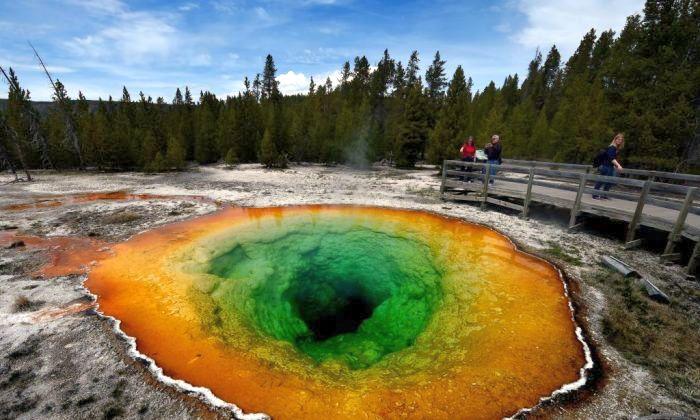A Yellowstone National Park thermal spring near the famed Old Faithful geyser erupted for the fourth time in 60 years.
Ear Spring, which is shaped like a human ear, began shooing steam 20 to 30 feet up in the air, U.S. officials said. A height of that size has not been recorded since 1957.
“The eruption ejected not only rocks, but also material that had fallen or been thrown into the geyser in years past, like coins, old cans, and other human debris,” it added. “The last known similar-sized eruption of the spring was in 1957, although smaller eruptions occurred as recently as 2004. As a result of these changes, Yellowstone National Park has closed portions of the boardwalk.”
Officials had to close some boardwalks and trails in Yellowstone. New activity was recorded in the Geyser Hill area of the Upper Geyser Basin, East Idaho News reported.

Yellowstone Supervolcano?
Officials have stressed that there have been no signs of volcanic activity at the park. There have been a bevy of reports in recent years, namely from U.K. tabloids, that the Yellowstone “supervolcano” is about to erupt due to geyser activity or rockfall in the area that officials have said was not linked to any seismic activity. The Express tabloid on Sept. 21, in its headline, attempted to link the Yellowstone supervolcano to Ear Spring.“Changes in Yellowstone’s hydrothermal features are common occurrences and do not reflect changes in activity of the Yellowstone volcano. Shifts in hydrothermal systems occur only in the upper few hundred feet of the Earth’s crust and are not directly related to movement of magma several kilometers deep. There are no signs of impending volcanic activity. There has been no significant increase in seismicity nor broad-scale variations in ground movement,” said the USGS.
Geologist Jeff Hungerford at Yellowstone National Park, said last year that the volcano won’t erupt in the near future.
“We would likely see years to decades of anomalous activity at Yellowstone before any kind of a significant eruption,” Stickney added.





Friends Read Free